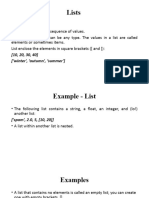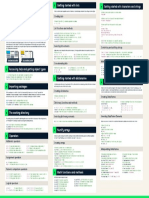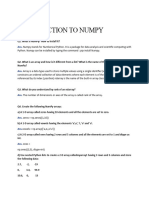0% found this document useful (0 votes)
5 views11 pagesPTTQHDL - Lab 01
The document outlines various data structures in Python, including lists, dictionaries, series, and data frames, with practical examples for each. It explains how to create, access, update, and delete elements within these structures, as well as their unique properties and methods. Additionally, the document includes exercises to reinforce understanding of these concepts.
Uploaded by
hangocnhi0006Copyright
© © All Rights Reserved
We take content rights seriously. If you suspect this is your content, claim it here.
Available Formats
Download as PDF, TXT or read online on Scribd
0% found this document useful (0 votes)
5 views11 pagesPTTQHDL - Lab 01
The document outlines various data structures in Python, including lists, dictionaries, series, and data frames, with practical examples for each. It explains how to create, access, update, and delete elements within these structures, as well as their unique properties and methods. Additionally, the document includes exercises to reinforce understanding of these concepts.
Uploaded by
hangocnhi0006Copyright
© © All Rights Reserved
We take content rights seriously. If you suspect this is your content, claim it here.
Available Formats
Download as PDF, TXT or read online on Scribd
/ 11























































































